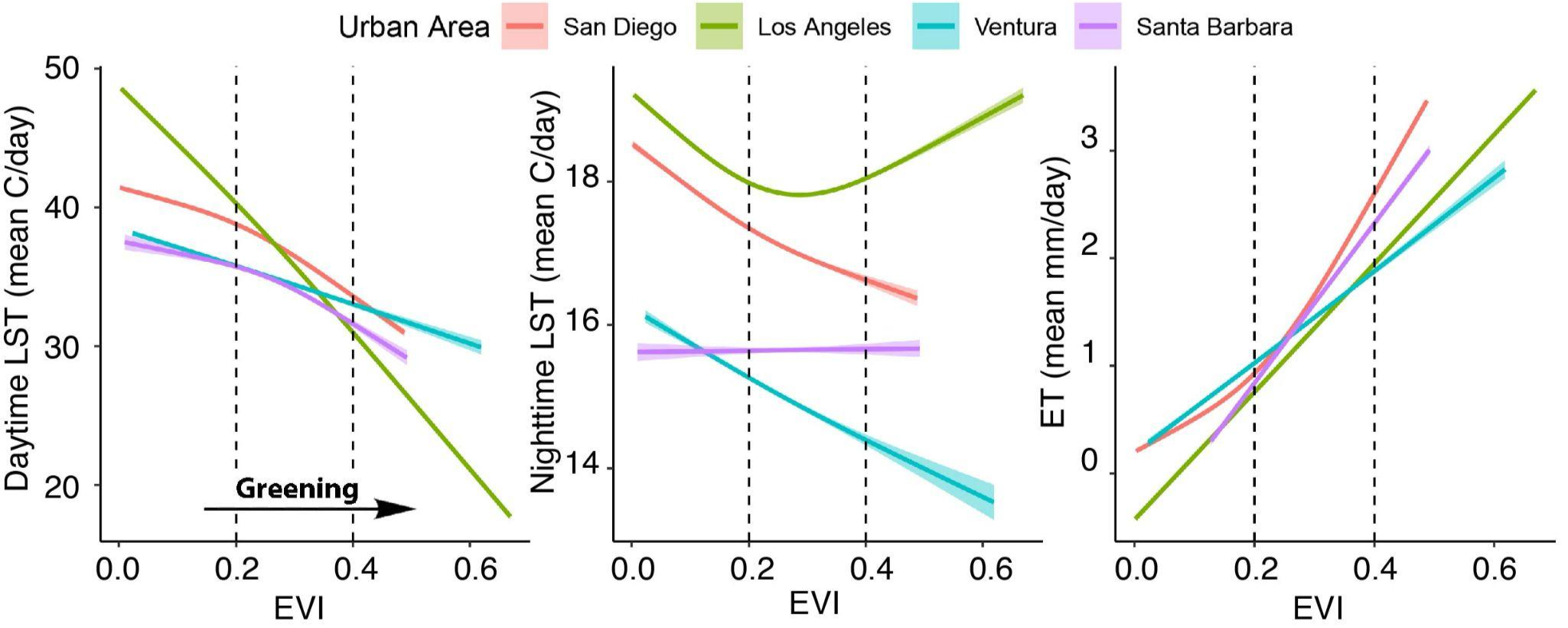
Theme 3: Ecohydrology and sustainable greening
Theme area 3 research will be led by Dr. Morgan Levy and will aim to answer the broad question: Where and how can green space be used as an effective heat adaptation strategy, and what are the associated climate and water resource constraints?
Unlike large-scale climatic conditions, urban green space can be directly modified and controlled at local scales, providing a potentially powerful local lever for adapting to the heat exposure risks of climate change. However, regionally-specific heat mitigation potential and the long-term climate suitability of urban greening interventions are not yet well understood. This is especially true for densely populated coastal regions with highly variable microclimates. Currently, we have limited landscape-scale understanding of interactions between urban vegetation and key environmental features such as soil moisture, temperature, and humidity that may shift with climate change. Additionally, there is substantial variation in environmental features across the connected urban-to-rural patchwork regions of the Southern California coast. Exploration of the ecohydrology (or biological and hydroclimatic coupling) of urban vegetation is an emerging area of research, and the SoCal coastal zone serves as a useful location for such research. Furthermore, despite widespread calls for urban greening solutions, and research detailing the potential water benefits of greening, there is scant research addressing water constraints to urban greening potential in arid regions, and the issues of provision of urban water and disrepair of urban water infrastructure have gone unexamined.
Research Objectives:
- Quantify locally- to regionally-specific relationships between vegetation and temperature.
- Assess the water sustainability of vegetation water needs associated with health- relevant urban greening interventions.
- Assess greening scenario response to climate (atmosphere, ocean) variability.
- Co-produce water-sustainable urban greening scenarios with community partners.
Research Questions:
- What levels of vegetation coverage correspond to health-impact relevant changes in temperature, conditional on local geography?
- Is the quantity of water, timing of water demand, and water infrastructure available to sustain urban greening interventions that achieve desired temperature outcomes?
- What challenges do projected change in coastal ocean and atmospheric conditions pose for vegetation, and therefore urban greening solutions, in the coastal zone region?
- What are the specific challenges to overcome, requirements of, and opportunities to implement, climate-resilient and water-sustainable urban greening interventions in coastal zone communities?

Relationships between greening (EVI), temperature (daytime and nighttime LST), and water consumption (ET) in coastal southern California urban areas. Panels show generalized additive model-fit relationships between monthly 1km MODIS EVI (horizontal axis) and MODIS LST and ET (vertical axes), acquired via GEE (Gorelick et al., 2017), over urban areas (GHSL, 2019) in southern California from July- September, 2003-2012. Vertical lines indicate EVI for bare soil (0.2) and moderate tree cover (0.4).
